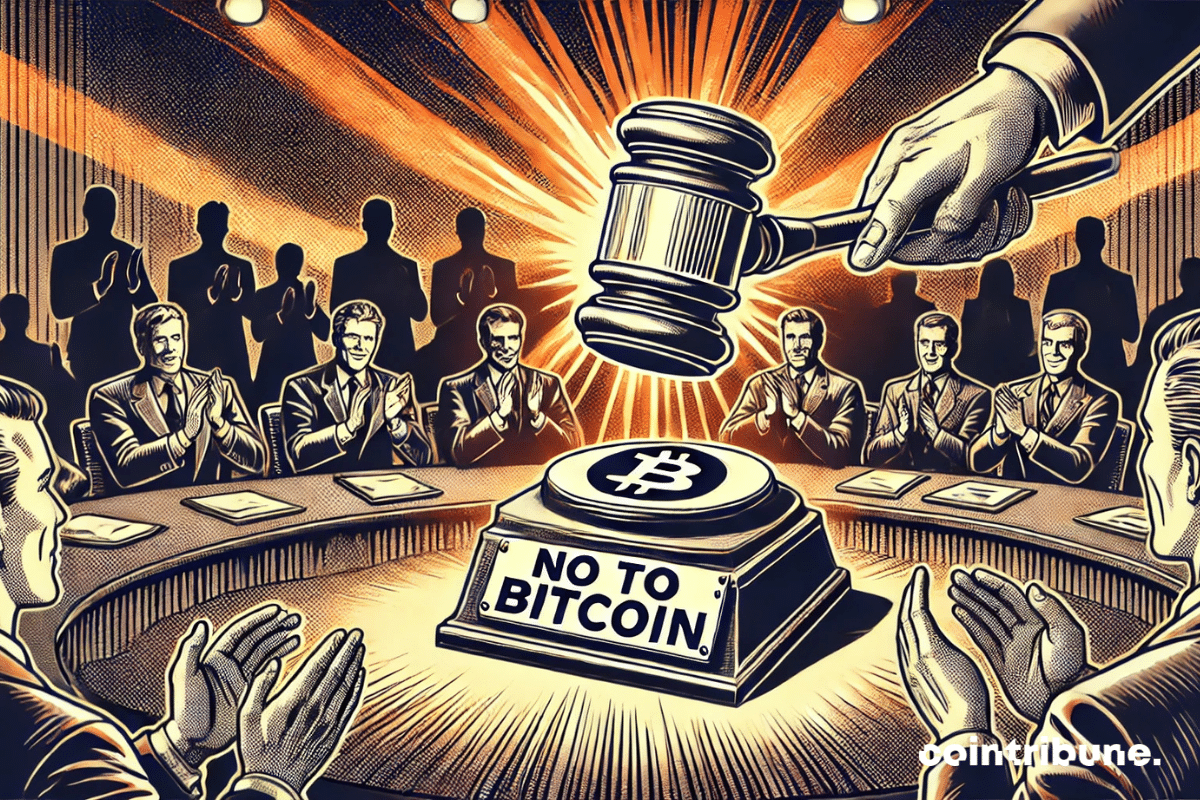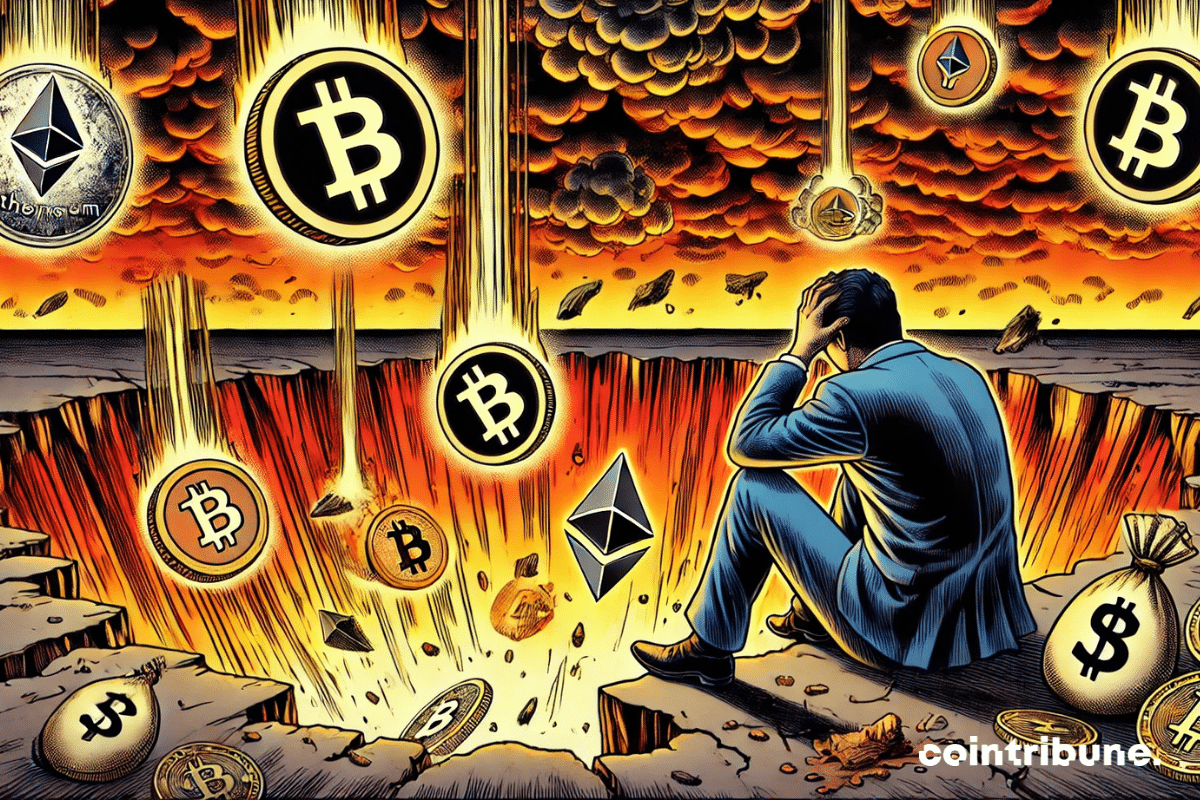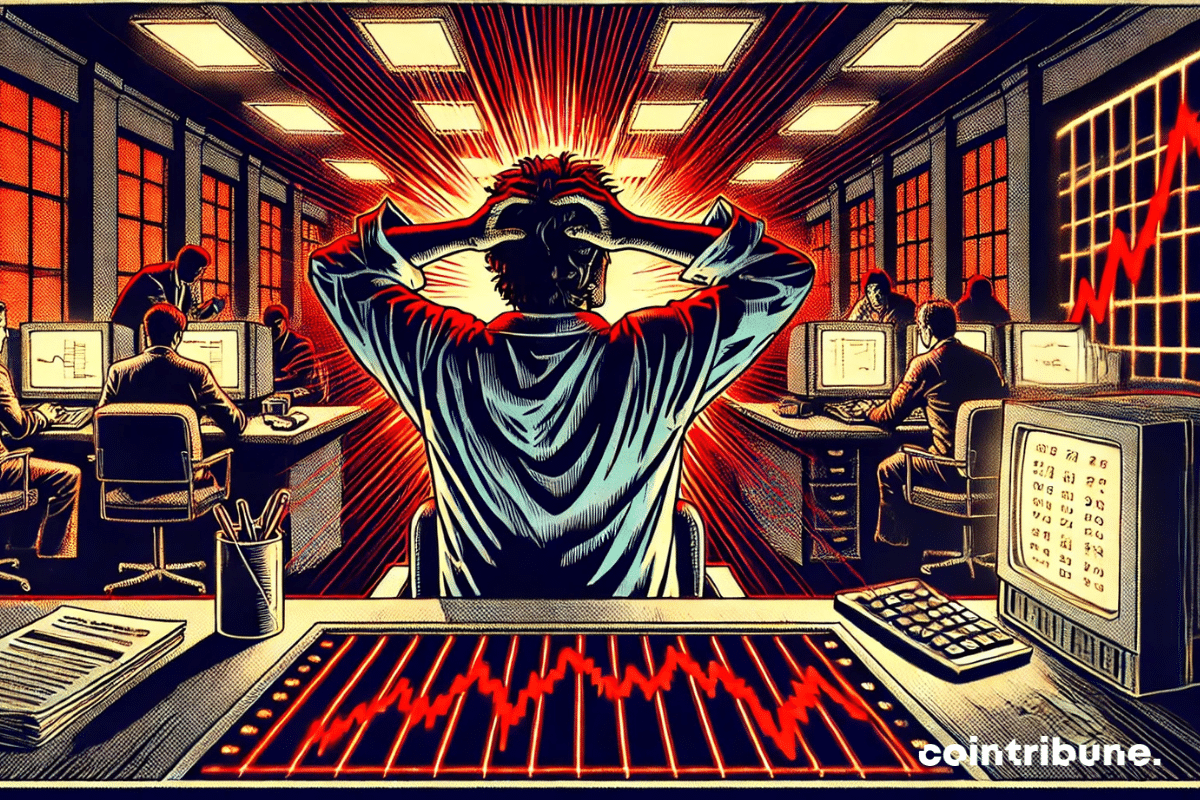For years, Bitcoin has established itself as a central topic in economic and financial debates, deeply dividing opinions. For its supporters, it represents a monetary revolution capable of redefining the rules of the global financial system. Conversely, its detractors denounce its volatility and the risks it engenders, deeming it incompatible with prudent investment strategies. Indeed, Microsoft has added a new episode to this controversy. During its annual meeting, the company's shareholders rejected an ambitious proposal aimed at including Bitcoin in the cash reserves of the tech giant. This decision, made in a context of particularly unstable financial markets, raises questions about the role of cryptocurrencies in the asset management strategies of large companies. Between the opportunity for diversification and caution in the face of uncertainty, the debate intensifies and reflects much broader stakes for the future of cryptocurrencies in the global economy.
Home » Archives for Luc Jose Adjinacou » Page 30
Luc Jose A.
Diplômé de Sciences Po Toulouse et titulaire d'une certification consultant blockchain délivrée par Alyra, j'ai rejoint l'aventure Cointribune en 2019. Convaincu du potentiel de la blockchain pour transformer de nombreux secteurs de l'économie, j'ai pris l'engagement de sensibiliser et d'informer le grand public sur cet écosystème en constante évolution. Mon objectif est de permettre à chacun de mieux comprendre la blockchain et de saisir les opportunités qu'elle offre. Je m'efforce chaque jour de fournir une analyse objective de l'actualité, de décrypter les tendances du marché, de relayer les dernières innovations technologiques et de mettre en perspective les enjeux économiques et sociétaux de cette révolution en marche.
The turbulence in financial markets amplifies the concerns of investors, who are seeking assets capable of withstanding economic and geopolitical uncertainties. In this context, Bitcoin, gold, and silver emerge as strategic havens. These three assets embody a concrete response to the threats posed by rising public deficits, persistent inflation, and the fragility of traditional bonds. Brian Russ, Director of Investments at 1971 Capital and a recognized expert, sheds light on the emergence of this new dynamic. He analyzes the growing role of these assets in the reorganization of investment portfolios.
The crypto sector has just crossed a significant milestone with the announcement from Riot Platforms, a major player in Bitcoin mining. Indeed, the company aims to raise 500 million dollars through a convertible bond issuance. This project comes at a time when the iconic cryptocurrency is approaching its historical highs, generating renewed interest from institutional investors. Thus, this strategy emphasizes Riot Platforms' desire to consolidate its dominant position in a market where competition is intensifying.
The crypto market is hit by a new wave of turbulence. In just 24 hours, nearly 760 million dollars were liquidated, including 200 million in just one hour. This brutal movement, a symptom of a constantly bustling market, reflects the vulnerability of leveraged positions to sudden price fluctuations. At the same time, this situation highlights the significant challenges investors must face, balancing risk management and heightened volatility.
This Monday, December 9, 2024, around 3 PM UTC, Bitcoin reached an all-time high of $103,900, fueling hopes for a sustained bull run. However, within a few hours, this momentum was shattered. The price of Bitcoin plummeted dramatically to $98,015, dragging down the entire market of major crypto assets with it. This reversal, far from being trivial, sparked numerous questions among investors. While some hoped for a simple temporary correction, others see it as a negative signal for the future. This situation is accompanied by a climate of increased volatility, exacerbated by massive sell-offs and record liquidations.
Amid revolutionary announcements, technological developments, and regulatory turbulence, the crypto ecosystem continues to prove that it is both a territory of limitless innovations and a battleground of regulatory and economic conflicts. Here is a summary of the most significant news from the past week concerning Bitcoin, Ethereum, Binance, Solana, and Ripple.
Corporate treasuries are at a pivotal turning point in the face of global economic instability. Indeed, the National Center for Public Policy Research (NCPPR), an influential think tank based in Washington D.C., has submitted an innovative proposal to Amazon. The organization calls on the online retail giant to invest a portion of its $88 billion in reserves into bitcoin, a cryptocurrency whose value has skyrocketed by 1,246% in five years. By highlighting bitcoin's spectacular performance and its potential as a hedge against monetary erosion, this initiative aims to protect Amazon's asset value amidst high inflation. As this proposal will be discussed at the April 2025 general assembly, it raises significant issues regarding the evolution of major corporations' financial strategies and the growing role of cryptocurrencies in the global economy.
Ethereum is going through a decisive phase that is attracting the attention of investors and analysts in the sector. The network has just recorded a notable 36% increase in active addresses, rising from 306,000 to 417,000 in one month. This figure, spectacular in its magnitude, reflects increased adoption and a palpable resurgence of interest. Meanwhile, the crypto has reached high price levels, supported by an organic demand that seems to be solidifying. This rise raises a central question: is the market witnessing the beginning of a sustainable bullish cycle or merely a temporary rebound?
In a world facing increasing geopolitical tensions and sustained volatility in financial markets, the ultra-rich are reassessing their investment priorities. A recent study by UBS, titled "UBS Billionaire Ambitions," reveals that these billionaires are adopting defensive strategies to safeguard their wealth against constantly evolving risks. Among their preferred choices are traditional assets such as real estate, precious metals like gold, and even cash reserves. These trends, far from being trivial, reflect a desire for diversification and protection against global uncertainties.
The crypto market has experienced remarkable turbulence, marked by a major transaction that has captured the attention of investors. Within a few days, major players in the sector, referred to as "whales," acquired 120 million XRP, a flagship asset, for an amount approaching 288 million dollars. This move comes as XRP has suffered a significant drop in its price, falling 23%, from $2.90 to $2.22. Furthermore, this sharp correction has opened a strategic window for these investors, who took advantage of this decline to consolidate their positions. Meanwhile, the market shows signs of increasing volatility, reflecting complex dynamics between sudden corrections and spectacular rebounds.
The global finance has just reached a decisive milestone with Bitcoin, the most emblematic crypto, which has for the first time surpassed the symbolic threshold of 100,000 dollars. This historic record is set against a backdrop of economic tension marked by a general slowdown of traditional assets like gold, oil, and stock indices. Indeed, unlike these latter, which struggle to show significant gains, Bitcoin continues to assert its resilience and its ability to attract investors. As global liquidity contracts, this breakthrough reflects Bitcoin's growing maturity, as well as its position as a strategic asset in modern portfolios. Analysts, optimistic, anticipate a continuation of this momentum, estimating that the rally could extend until the end of 2025.
The crypto revolution has just crossed a crucial milestone. According to the latest Chainalysis report, the number of crypto wallets with a positive balance has surpassed 400 million, setting a new record. This figure reflects the surge of these assets but also their growing adoption worldwide by both individuals and institutions. Such dynamics are largely driven by the massive use of stablecoins, which now represent a significant portion of on-chain transactions, and by the emergence of innovative financial products like cryptocurrency exchange-traded funds (ETFs). These elements are reshaping the traditional uses of cryptocurrencies and enhancing their integration into the global economy.
Since its launch, Ethereum has established itself as a cornerstone of the crypto ecosystem, thanks to its ability to combine technological innovation with large-scale adoption. While the market is experiencing significant fluctuations, analysts are now considering an ambitious scenario: Ether (ETH) could reach the symbolic threshold of $15,000 by May 2025. This prediction is based on several converging factors. On one hand, strong technical signals, such as a three-year ascending triangle, suggest a sustainable upward trend. On the other hand, growing interest from institutional investors, driven by massive inflows into Ethereum ETFs, reinforces this perspective.
In the face of intensifying global economic tensions, the central role of the dollar in international exchanges is increasingly being called into question. At the heart of this upheaval, the BRICS nations are seeking to break free from this dependency by exploring alternative solutions. According to economist Jim Rickards, these countries already have an unofficial common currency: gold. This discreet yet strategic approach allows them to bypass the financial pressures exerted by the United States, particularly through economic sanctions. As the United States intensifies the use of the dollar as a geopolitical weapon, the BRICS are mounting a resistance that could redefine the rules of global trade. This strategy raises questions about the future balance of the international monetary system.
The crypto market is experiencing a resurgence, driven by a wave of enthusiasm for memecoins and a spectacular increase in trading volumes on decentralized platforms. This rise reflects a combination of technological innovation and unparalleled financial prospects. As transactions intensify and records are broken, a new dynamic is establishing itself within this rapidly expanding ecosystem. However, beyond the spectacular figures and tales of quick enrichment, an essential question arises: who are the true beneficiaries of this new gold rush in the digital realm?














